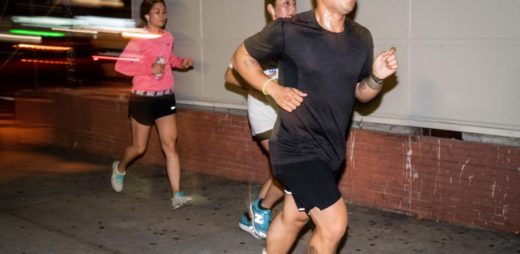How to come back from runner’s knee
Rafael Nadal is a legend in the tennis community. With 22 Grand Slam wins (to date) and many other tennis accolades, Nadal has solidified himself as one of the greatest tennis players of all time (in fact, he was No.1 for 209 weeks!).
Unfortunately, in 2005 during the Wimbledon final, he suffered a knee injury. This injury wasn’t a tear or dislocation, but it was enough to interfere with his play. His knee troubles continued for years, even forcing him to withdraw from the 2012 US Open. Rafael Nadal has since been able to recover and continue his astonishing career, but it hasn’t been without hard work.
So what is this knee injury that set him back?
What Is Runner’s Knee?
If you’re a runner of any level, you’re likely familiar with “Runner’s Knee.” This condition, medically known as patellofemoral pain syndrome (PFPS), is pain at the front of the knee caused by dysfunctional movement patterns of the patella (i.e. kneecap) and femur (i.e. your thigh bone) that can lead to pain at the patellar tendon (i.e. the thick tendon at the bottom of your knee cap). As you can see from Rafael Nadal’s injury , PFPS doesn’t only affect runners.There are a number of reasons for knee pain, but patellofemoral pain syndrome is the most common. This injury, though common in running, is also seen in sports associated with running, jumping, and other high load demands. People with PFPS are able to reproduce their pain with squats, going up stairs, jumps, and of course – running.

What Are The Main Causes?
Everyone’s experience with PFPS is different, but the most common causes are:
What Are The Main Signs and Symptoms?
The signs and symptoms of patellofemoral pain syndrome may not all be applicable to you, but be mindful of the following:Who’s At Risk?
Age can play a big factor when it comes to PFPS. This is typically seen in teenagers and young adults. When we age, problems with the knee tend to be more joint related e.g. arthritisSex differences are also present with PFPS. Unfortunately, women are twice as likely as men to experience PFPS. The common causes of PFPS are often related to women more than men e.g. joint alignment with the hip and muscle imbalances.
Activity specific – as said before, runner’s knee is commonly seen in sports that involve running, jumping, cutting, and any other sport that stresses the knee.
What Can Be Done?
There are a number of things you can do to alleviate pain at the knee. Try these below:Foam Rolling helps release your muscles from any myofascial tension caused by poor flexibility, overuse, or muscle weakness. Though temporary in affect, it can be a very helpful tool to use in the rehab arsenal.
Taping at the knee can temporarily help alleviate pain, especially with movements like getting up and down a chair or a set of stairs.
Mobility is key to addressing knee pain. This can include dynamic whole body movements, as well as specific stretches to alleviate tension at the knee. Here are some examples of movements that alleviate tension of the quadriceps, hamstrings, hip flexors, glute muscles, and calf.
Strength training has the highest level of evidence for alleviating “runner’s knee.” This should be incorporated into a rehabilitation and maintenance routine. The research supports exercises that target the quadriceps and hips to facilitate the proper mechanics for the knee. Here are some examples you can try at home: glute bridge, stork, and squat.
It’s important to note that mobility and strength exercises will serve you best under guidance from a healthcare professional. Even professional athletes and therapists alike benefit from coaching, cues, and progressions for the knee exercises under safe conditions.
Ready to start managing your Runner’s Knee?
Though there are many things you can do to immediately help your pain, seeing a healthcare professional sooner rather than later can offset any gaps in treatment. Your therapist will provide the needed guidance for pain management, progressions, and ultimately working with you to help reach your goals.Therapists have other tools up their sleeve – manual therapy, gait/movement retraining (biomechanics), blood flow restriction therapy, taping, education Alternate
It is important to see a licensed healthcare professional if you’re experiencing PFPS. It’s not uncommon for people to push through the pain. Unfortunately, this ends up lengthening your recovery time. By seeing a healthcare provider sooner rather than later, you can prevent any further damage ensure that you’re given the tools to address the causes of your pain and FutureProof your body.



